Super Simple DIY Scratch Brush
If you are looking for an inexpensive way to help your goats scratch, this DIY scratch brush for goats will help. A cheap and fast solution for how to raise dairy goats that are itchy that they can use to get relief, reduce stress, and keep their overall health intact.
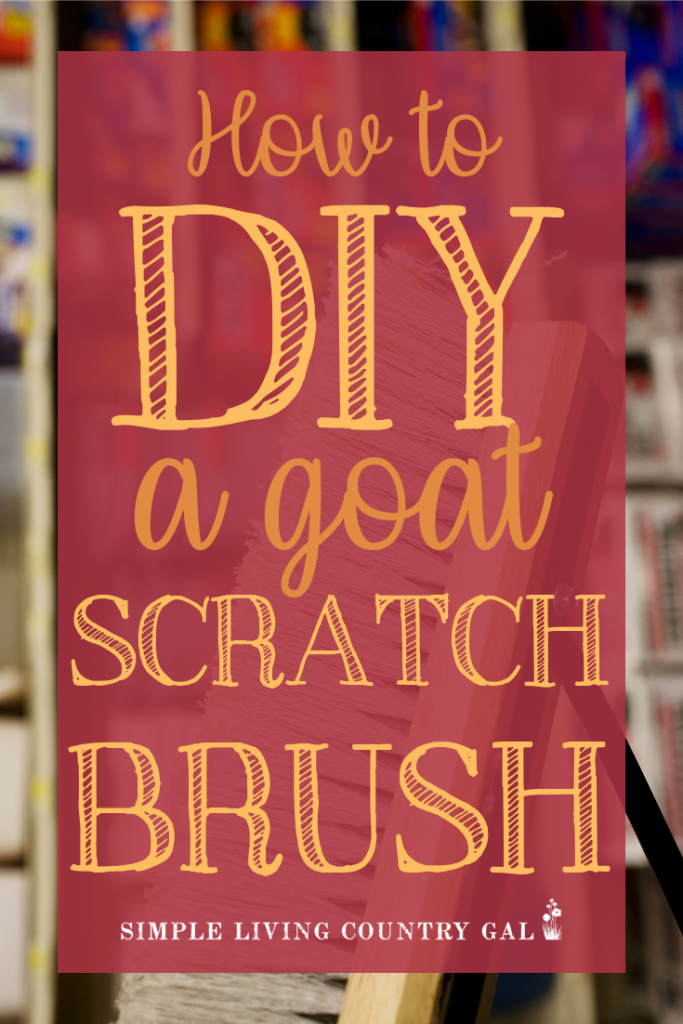
One of the things my goats love to do is scratch…on anything. The hay feeder, a tree, even my backend. (Yes, never stand still near an itchy goat.) There is nothing more pleasant than a goat scratching her itchy wet nose all over my back in the middle of winter…said no one ever. To help my goats out I installed a super simple DIY scratch brush in their pen.
The other day I was at a friend’s house and saw the neatest thing set up in her goat barn.
She had attached broom brushes onto the wall of her barn so her goats could rub up and scratch themselves. I sat there and watched several does walk by getting in a good scratch and how relaxed they look as they walked away. I just loved this idea. Not only was it a useful way for a herd to do a little self-care but it also looked super easy to set up and inexpensive to make.
That weekend Hubby and I went brush shopping at Tractor Supply. Unfortunately, all the brushes I saw were too small for what I needed and also a bit expensive.
We then looked in the aisle with the push brooms and found the perfect thing. The replacement brushes for push brooms. They came in a variety of sizes and the bristles were stiff enough that I knew they would hold up for quite a while.
The price was great too, less than $10 each.
Not sure what I mean? Here is a replacement head for a push broom from Amazon.

Super Simple DIY Scratch Brush for your Goats
Before you head out to the store to purchase replacement heads, take a look at what you have at home first. As homesteaders, we tend to keep things that we might just need someday and you may be surprised to find the exact brush head you are looking for. You can also check out yard sales or ask around for any that you may be able to use as well.
Step #1. Decide How Many Brushes
If you have a large herd one brush may not be enough. I would suggest installing 1 scratch brush per 5 goats. This should keep the pushing and shoving down to a minimum when you first install them.
Goats are very curious, even nosey so they will swarm you as you are installing the scratch brushes. I am sure they think they are “helping” you, but that never really seems to be the case.
Step #2. Choose a Good Location
These brushes are pretty durable and can be hung both inside and outside of your goat shelter. My best advice is to choose a location that is the sturdiest and can withstand a 100-pound goat’s weight.
You will also need to install your brushes at the correct height as well. The main area a goat will scratch on is their head, sides, and the middle of its belly. I would just eyeball it to be sure most of your goats can use the brushes comfortably. If you have mini goats and full-sized goats in the same herd, then a brush at each level will be your best option.
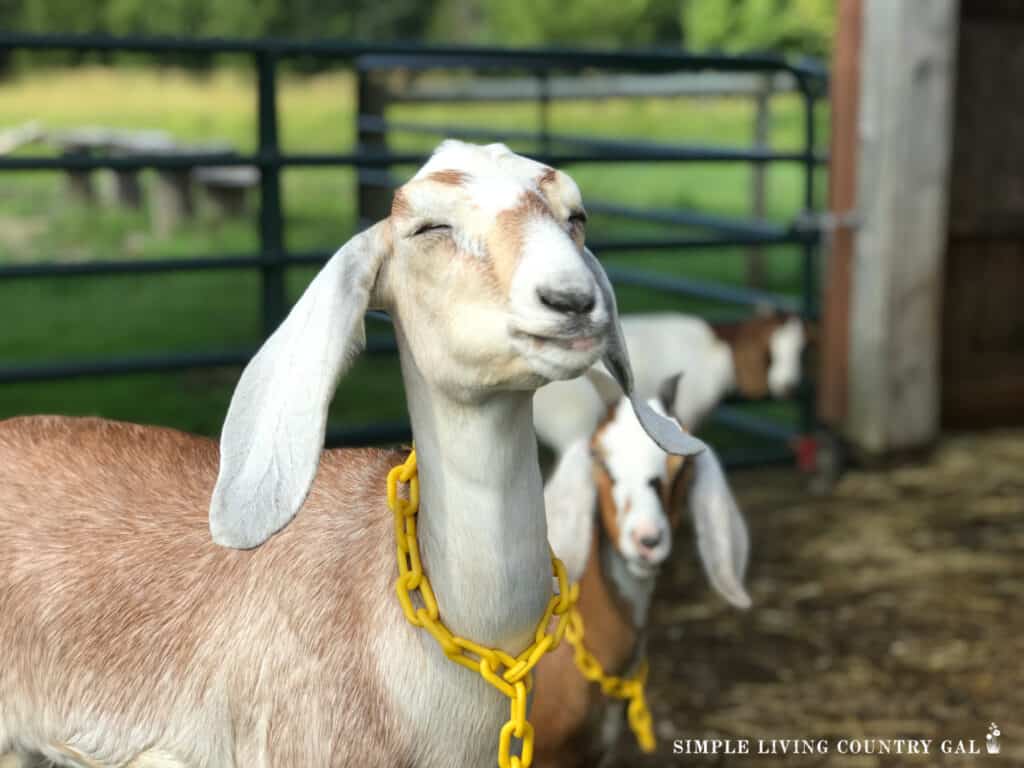
Step #3. Prep the Brush
You will need to pre-drill a few holes in the brush to make installation a bit easier. Even though you will be attaching the brush with the bristles facing out, I found it easier to drill holes from the back end.
Step #4. Attach the Scratch Brush
You will want to hang the brush vertically on the wall to give the biggest area of scratch to your goats. Again be sure to choose a location that is sturdy. A 60-pound goat can do a lot of damage when it pushes all of its weight against a wall. That means a main beam will probably be your best bet if you have one available.
Attach the brush with screws one at the top and one at the bottom using the holes you drilled in step #3.
Before I even had the brush attached, my big buck Toby was over there scratching away! He really went to town and I was happy to see the brush stayed put through the full 10 minutes he used it.
It wasn’t long before the rest of the herd was scratching on the brush as well. A good sign that this was an addition that was truly needed.
You can expect your brush to last a good 5-6 months but it all depends on how many goats are using it and how often. It will also depend on the condition of the brush when you install it.
Remember this is only for normal seasonal itching that comes with the changes in the weather. If you have a goat with a skin condition you will need to treat that prior to installing a brush. Some conditions can be contagious so correct any issues as soon as you see them. This will prevent the spread of pests as well, such as lice. Lice is a huge cause of itching so if you see a goat that is excessively scratching you may want to get a closer look.
How do you know if your goat has lice?
The best answer is, you look. Using your hands, part the fur on your goat and look for any movement. Yes, lice are small but you can still see them especially if they are moving. If you find your goat has lice, you will want to treat not only that goat but your entire herd. Usually if one has lice they all have lice. Do not worry about getting lice from your goat. Lice are spread from goat to goat and not humans.
How do I treat a goat with lice?
Lice tend to show up in late winter to early spring. If it’s warm you can shave your goat’s fur. We do this every summer to help keep our goats cooler and it works great if you have lice. I prefer to use natural treatments whenever possible and when it comes to lice I like to use diatomaceous earth.
Diatomaceous earth is made up of tiny fossilized diatoms (plankton). when you sprinkle it on your goat it creates a poor environment for lice but will not harm your goat in any way. Be sure to get food-grade DE which is readily available at feed mills, stores, and online.
Sprinkle DE on the back of your goat using gloved hands to gently work it into their fur. Be sure not to breathe in DE dust while you are using it. You can wear a mask to help protect yourself. Please know that DE is better at preventing lice so if you have a severe case you may want to contact your vet for medical treatments.
When you are homesteading it is always best to use what you have for any projects needed. In rare cases such as this, you may need to invest in a few of the supplies needed for a project. In that case, try to find the best fit for the least amount of money. By thinking just a bit outside of the box you will be able to do more while spending a whole lot less.
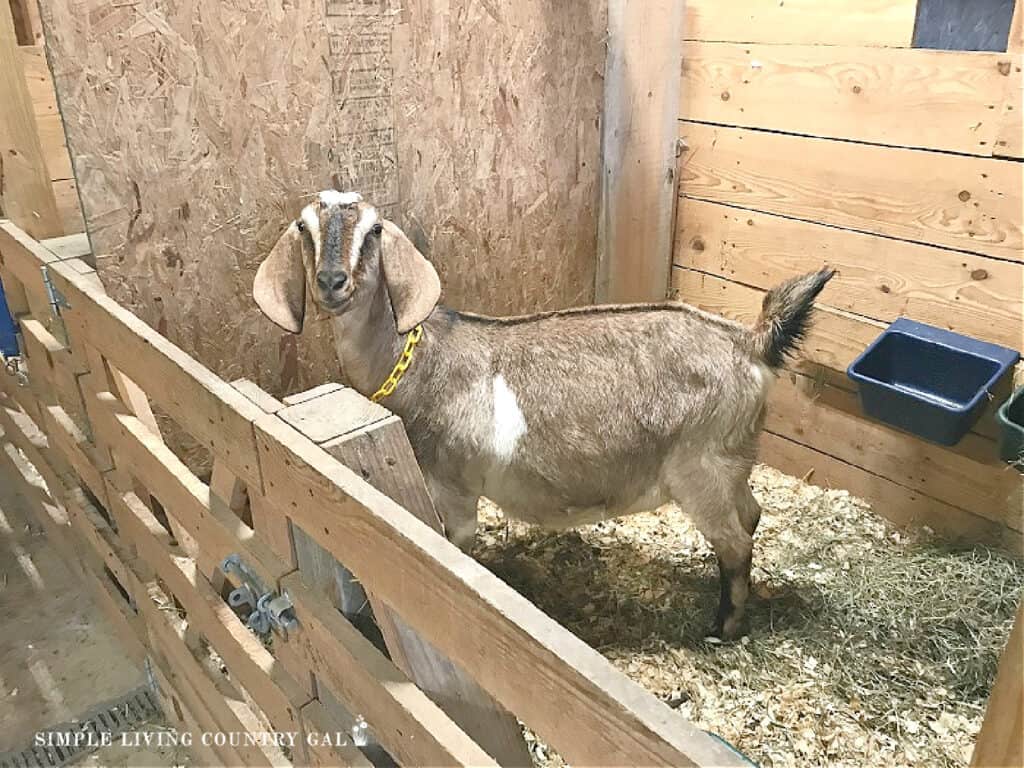
Now you can set up a DIY scratch brush for your goats and help them to be relaxed and itch-free.

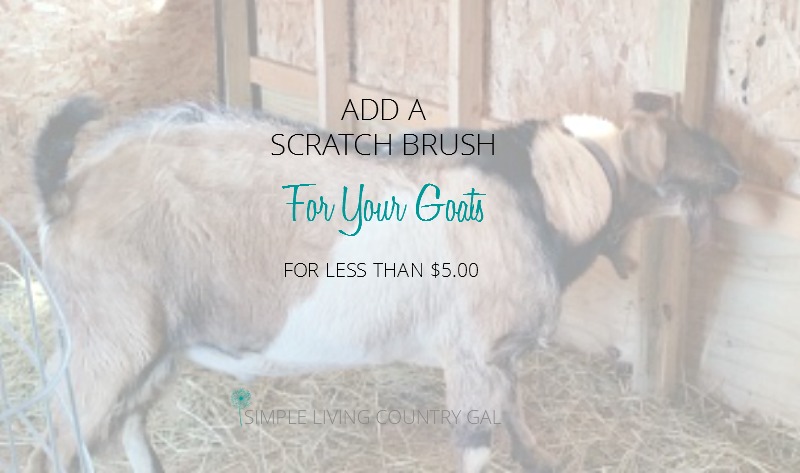
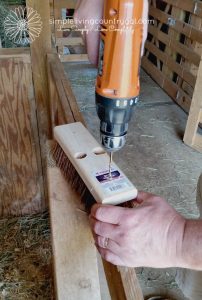
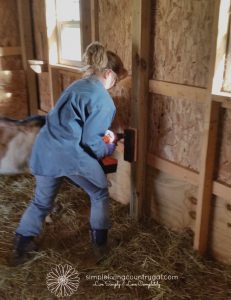
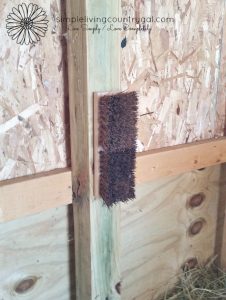
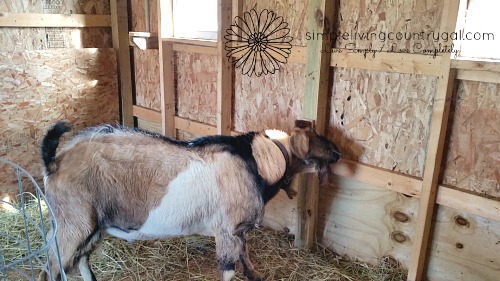
I’m thrilled to have found your website – you have such great information and having included photos and videos really helps!
Glad you found it helpful!
Tracy Lynn
Tracy I am so happy to find your site!!! We just got 2 Nigerian Dwarf Goats. We are 1st time goat owners. I’m so glad to find all you are posting about!
My husband and I live in East Tucson AZ. We are in our 60’s are having to live much more simple due a financial crisis that will forever change the way we do things.
I do already make our own cleaners, use therapeutic essential oils for many things and would love to learn to sell them for financial help.
Our farmstead is only 1 acre but home to 2 goats, 6 chickens, 2 horses that we will have to sell, 3 feral cats and 2 dogs.
So really trying hard to learn homesteading skills. Living simply. Selling off what we don’t need.
Sorry this was long, but you inspired me to learn more from you!!!
Sincerely,
Mary F
Hello, Mary!
Welcome to homesteading my friend.
First, I am so sorry about your financial crisis. I can only imagine how difficult that is after working for so many years for this time in your life.
I am glad you found my site, and I hope you get inspired to keep living more simply. Our grandmothers really did know what they were talking about. 🙂
Are you gardening? If not, I have loads of articles for easier ways to grow food. My back has forced me to change the way we homestead and garden.
All the best,
Tracy Lynn